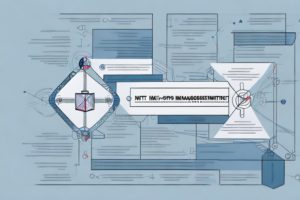What are the 4 primary basic risk management principles?

Four different shapes
Risk management is one of the most crucial aspects of any business or industry. Risk can be defined as the potential or possibility of an event occurring that could have negative consequences, and risk management is the process of identifying, analyzing, and taking steps to minimize such risks. In this article, we will explore the four primary, basic risk management principles, their importance, and their application in different industries.
Understanding the concept of risk management
Risk management entails identifying, assessing and prioritizing risks, and applying corrective measures to mitigate their impact. Risk management is a continuous process that must be integrated into every aspect of an organization’s operations, including planning, decision-making, and monitoring. An effective risk management process ensures that organizations can anticipate and survive unforeseen events. Risk management is an essential aspect of every business process and strategy and is an essential tool that helps organizations achieve their goals.
One of the key benefits of implementing a robust risk management process is that it helps organizations to make informed decisions. By identifying potential risks and their potential impact, organizations can make better decisions that take into account the potential risks and rewards. Additionally, a well-designed risk management process can help organizations to reduce costs associated with risk, such as insurance premiums and legal fees. By proactively managing risks, organizations can avoid costly incidents and minimize the impact of any incidents that do occur.
The importance of risk management in business
Risk management plays a critical role in the success of any organization. It is essential to have effective risk management strategies to ensure that an organization can manage unknown risks and sustain continuity of operations. Without effective risk management, businesses can be exposed to financial losses, legal liabilities, and reputational damage. Risk management also enables companies to identify opportunities in emerging markets and to expand their operations safely and securely.
Effective risk management involves identifying potential risks, assessing their likelihood and impact, and developing strategies to mitigate or avoid them. This process requires a thorough understanding of the organization’s operations, industry, and regulatory environment. Risk management should be an ongoing process, with regular reviews and updates to ensure that the organization is prepared for new and emerging risks. By implementing effective risk management strategies, businesses can not only protect themselves from potential harm but also gain a competitive advantage by being better prepared to take advantage of new opportunities.
Principle 1: Identification of risks and potential threats
The first and most crucial principle of risk management is to identify risks and potential threats. This enables organizations to anticipate and prepare for any eventuality. Organizations must conduct comprehensive risk assessments to identify the sources and impacts of potential risks. Risk assessments should identify risks associated with technology, people, processes, financial, legal, and regulatory aspects of the organization. Risk identification should be an ongoing process, incorporated into every aspect of the organization’s operations.
Once risks have been identified, organizations must prioritize them based on their potential impact and likelihood of occurrence. This allows organizations to allocate resources and develop strategies to mitigate the most significant risks first. Prioritization also helps organizations to avoid wasting resources on low-risk events that are unlikely to occur or have minimal impact.
Furthermore, risk identification should not be limited to internal risks. Organizations must also consider external risks, such as natural disasters, cyber-attacks, and economic downturns. External risks can have a significant impact on an organization’s operations, and it is essential to have contingency plans in place to mitigate their effects.
Principle 2: Evaluation and analysis of risks
The second principle of risk management is to evaluate and analyze risks. Organizations should prioritize risks based on their potential consequences and their likelihood of occurring. The aim is to determine which risks must be addressed first. After prioritizing the risks, organizations should conduct an in-depth analysis of the selected risks to understand their nature and the potential impacts. Organizations should consider all relevant factors such as the cost of mitigation measures, likelihood of occurrence, and potential consequences.
Once the risks have been analyzed, organizations should develop a risk management plan that outlines the steps to be taken to mitigate the identified risks. The plan should include specific actions, timelines, and responsibilities for each risk. It should also include a communication plan to ensure that all stakeholders are aware of the risks and the measures being taken to address them.
It is important for organizations to regularly review and update their risk management plan to ensure that it remains relevant and effective. This includes monitoring the effectiveness of the mitigation measures and adjusting them as necessary. By regularly evaluating and analyzing risks, organizations can proactively manage potential threats and minimize their impact on the organization.
Principle 3: Risk mitigation strategies and implementation
The third principle of risk management is developing and implementing risk mitigation strategies. The objective of risk mitigation is to minimize or eliminate the impact of an identified risk. Organizations should consider all possible mitigation measures and choose the most appropriate ones based on the results of their analysis. Risk mitigation should be an ongoing process, and new mitigation measures should be applied as new risks are identified. Organizations must also ensure that they have appropriate contingency plans in place to respond to unexpected events.
It is important for organizations to regularly review and update their risk mitigation strategies to ensure they remain effective. This can be done through regular risk assessments and evaluations of the effectiveness of current mitigation measures. Additionally, organizations should involve all relevant stakeholders in the development and implementation of risk mitigation strategies to ensure buy-in and cooperation. By continuously improving their risk mitigation strategies, organizations can better protect themselves from potential risks and minimize the impact of any unexpected events.
Principle 4: Monitoring and review of risk management plan
The fourth principle of risk management is the monitoring and review of the risk management plan. Organizations must monitor their risk management plans to ensure their effectiveness continually. Regular reviews must be conducted to evaluate the effectiveness of the risk management process, identify gaps, and amend the plan based on new circumstances, emerging trends, and new information. Continual monitoring and review of the risk management plan help organizations to adapt and position themselves to respond to emerging risks effectively.
It is essential to note that monitoring and review of the risk management plan should not be a one-time event. Instead, it should be an ongoing process that involves all stakeholders. This process should be integrated into the organization’s culture and operations to ensure that risk management is a continuous and integral part of the organization’s decision-making process. By doing so, organizations can identify and address potential risks before they become significant issues, thereby minimizing the impact on the organization’s operations and reputation.
Common misconceptions about risk management principles
There are several misconceptions about the principles of risk management. Some people believe that risk management is only important for large organizations, while others believe that the process is a one-time event. However, these beliefs are not true. Risk management is essential for all organizations, regardless of size, and should be an ongoing process that takes into consideration changes in the business environment.
Another common misconception about risk management is that it is solely the responsibility of the risk management department or team. In reality, risk management is a shared responsibility that involves all employees of an organization. Each employee should be aware of potential risks and take steps to mitigate them in their daily work. This not only helps to prevent potential losses but also creates a culture of risk awareness and management within the organization.
Best practices for effective risk management
Several best practices can help organizations to ensure effective risk management. These include proactive identification and monitoring of potential risks, involvement of all stakeholders, regular education and training of employees, regular review of the risk management process, and the use of technology to automate the risk management process.
Another important best practice for effective risk management is to establish a risk management framework that aligns with the organization’s goals and objectives. This framework should include clear policies and procedures for identifying, assessing, and mitigating risks, as well as a system for reporting and monitoring risk management activities.
Additionally, it is important for organizations to regularly assess and update their risk management strategies to ensure they remain relevant and effective. This can involve conducting regular risk assessments, reviewing and updating risk management policies and procedures, and staying up-to-date with industry best practices and emerging risks.
Examples of successful risk management in different industries
Effective risk management has been instrumental in the success of many industries. For instance, the banking industry has adopted risk management as a fundamental aspect of their operations and have established risk management departments. The aviation industry has also employed effective risk management strategies to improve safety and reduce accidents. Successful risk management strategies have also been implemented in the healthcare industry, where it has reduced the risk of adverse events occurring.
In addition to the aforementioned industries, the construction industry has also implemented successful risk management strategies. By identifying potential hazards and implementing safety measures, construction companies have been able to reduce the number of accidents and injuries on job sites. This has not only improved the safety of workers but has also resulted in cost savings for the companies.
Another industry that has benefited from effective risk management is the technology industry. With the increasing reliance on technology, the risk of cyber attacks and data breaches has become a major concern. However, by implementing robust security measures and regularly updating software, technology companies have been able to mitigate these risks and protect their customers’ data.
The impact of technology on modern risk management practices
Technology has had a significant impact on modern risk management practices. Technologies such as advanced analytics, machine learning, artificial intelligence, and the Internet of Things (IoT) have revolutionized the way risks are assessed, analyzed, and mitigated. These technologies provide organizations with real-time data on potential risks, enabling them to mitigate risks effectively and in a timely manner.
The future of risk management: trends and predictions
The future of risk management is marked by an increasing reliance on technology. This will allow organizations to automate the risk management process and react to emerging risks proactively. The use of artificial intelligence and machine learning will enable companies to identify and mitigate risks in real-time. The future also holds new frontiers in risk management, such as the use of social media and big data.
Importance of employee training in effective risk management
Employee training is crucial to effective risk management. Employees are the first line of defense in identifying and mitigating risks. Proper training enhances an employee’s understanding of the risk management process, enabling them to identify risks early and apply mitigation measures. Training should be conducted regularly to ensure that employees stay up-to-date with changes in the risk environment.
Addressing ethical considerations in risk management planning
Businesses must take into account ethical considerations in risk management planning. Ethical considerations include the impact on human rights, social responsibility, and environmental sustainability. Risk mitigation strategies must be developed and implemented with integrity, transparency, and accountability.
How to create a comprehensive risk management plan for your organization
Creating a comprehensive risk management plan involves several steps. First, identify all potential risks and prioritize them based on their potential impact. Next, conduct a thorough analysis of the selected risks, including factors such as their likelihood of occurrence and their potential consequences. Develop and implement mitigation measures based on the results of the analysis and establish contingency plans to respond to unforeseen events. Finally, regularly monitor and review the risk management plan to keep it up-to-date with changes in the risk environment.
In summary, effective risk management is essential for the success of any organization. The four primary, basic principles of risk management involve identifying, analyzing, mitigating, and monitoring risks. These principles provide organizations with a framework for managing risk and are essential for developing a comprehensive risk management plan.



